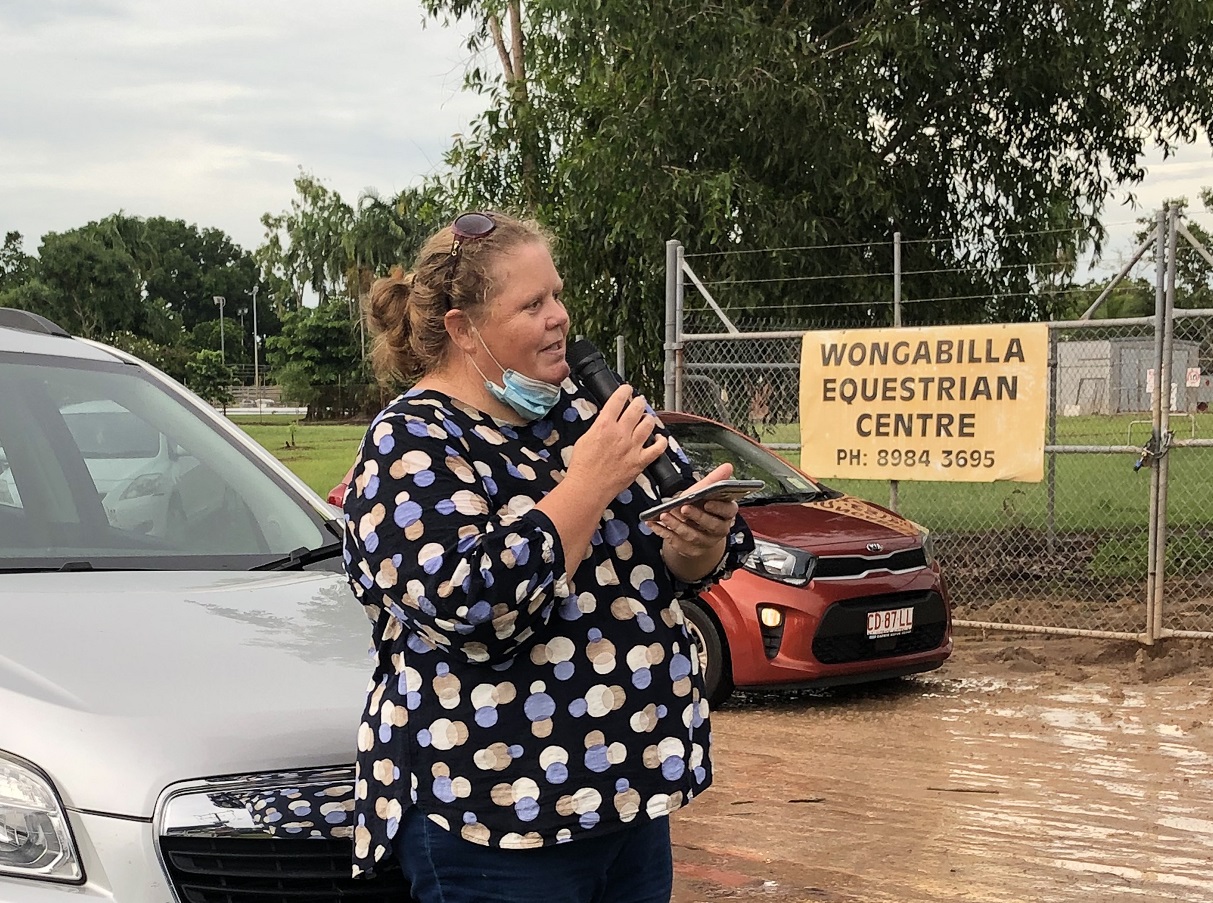
Loud banging and shouts of “Help me!”, “Black lives matter!” and “I’ve been in here too long!” could be heard from inside Don Dale Youth Detention Centre (DDYDC) on February 4 by protesters outside who were demanding its immediate closure.
DDYDC is a decommissioned adult jail, built in the 1970s. It includes the notorious maximum-security B Block of Berrimah Prison, where prisoners were placed in isolation in concrete cells measuring two by three metres.
It is now being used to keep youths in COVID-19 isolation for seven days.
The Close Don Dale movement has been organising weekly protests for nine weeks. It points to the 2016–17 Royal Commission into the Protection and Detention of Children in the Northern Territory which called for its closure.
Commissioners Margaret White and Mick Gooda said DDYDC was “not fit for accommodating, let alone rehabilitating, children and young people” due to its “severe, prison-like and unhygienic conditions”.
“All of the children in there now are suffering with trauma, with a whole range of issues that they’ve grown up with and around their own families,” Donna Hunter told the protest. Hunter’s 11-year-old grandson has spent several weeks over the past few months detained in DDYDC. He has also been placed in isolation for more than 20 hours a day in a B Block cell.
“I know most of the kids in here, their families, and the fact is that’s not the place for them. They need help medically and being in there is going to impact them a lot more. All the kids here now, if we don’t do something about it, they’ll be entering the Holtze Prison.”
The continued detention of children in DDYDC contravenes the Australasian Juvenile Justice Administrators’ (1996) Design Guidelines for Juvenile Justice Facilities in Australia and New Zealand, which states the minimum size of a bedroom (not cell) should be 7.5 metres square.
The Design Guidelines also state that “the juvenile justice facility should be planned to promote a sense of normality and youthful optimism”, and that barbed wire should not be used.
DDYDC is surrounded by multiple reams of barbed wire.
The continued use of DDYDC also contravenes the 1990 United Nations Rules for the Protection of Juveniles Deprived of their Liberty, which states that “the design of detention facilities for juveniles and the physical environment should be in keeping with the rehabilitative aim of residential treatment”.
DDYDC was not designed for rehabilitative purposes, and still less for children. It ceased being used as an adult prison in 2014, when the new Darwin Correctional Centre, in Holtze, was opened.
Darwin barrister John Lawrence SC has vowed to bring leaders responsible to account for keeping DDYDC open. “Who would have thought that Australia in the 21st century is locking up children in barbaric conditions?” he asked.
“It is gross negligence, arguably criminal. Governments continue to ignore this issue because it has to do with Aboriginal people and they think they’ll lose votes if they do anything, believe it or not, remotely humane, because they will be accused of being soft on crime and then they’ll lose the election.”
Lawrence previously challenged NT Chief Minister Michael Gunner to a public debate on his “tough-on-crime” stance and the use of DDYDC specifically. Gunner declined to participate, saying there was “no merit” to a debate because DDYDC would be “permanently closed within a year and replaced with a modern, fit-for-purpose youth corrections centre”.
But the NT government's chosen site for a new youth justice facility is next to the adult prison in Holtze, in direct contravention of the Royal Commission’s recommendations. Furthermore, the new facility will not be Aboriginal-run and will not feature the most appropriate models of trauma-centred care.
“There should be a significant expansion of diversion and prevention programs that keep kids out of jail in the first place,” Lawrence said. “If detention is strictly required, then the kids need a medical facility that treats them as patients with complex needs. In any case, it has been four years and the government hasn’t done anything. Why should we believe them now? These kids should not be in Berrimah Prison [DDYDC] for one day longer, let alone another year.”
Children as young as 10 can be, and have been, detained in DDYDC.
“The NT youth justice system is denying the right of the Indigenous child to health and safety by locking them up rather than addressing the severe health and welfare issues leading to crime,” said Elsa Adshead, a Darwin-based campaigner for Amnesty International.
elsa_adshead.jpg

“Applying criminal penalties to young children increases the likelihood they will get into trouble later in life, with children arrested before the age of 14 three times more likely than children arrested after 14 years to reoffend as adults. Children aged 10–13 years are particularly vulnerable to peer pressure.”
Another of the Royal Commission’s recommendations the NT government has ignored is to raise the age of criminal responsibility. “Youth justice in the NT needs to move from detention to prevention by addressing inequality in care, housing, education and employment,” Adshead said.
“There needs to be sufficient Indigenous-led prevention and care solutions in place so institutional horrors such as Don Dale are shut down and only appropriate care centres remain for serious offenders.”
Recently updated figures on the NT Government’s Youth Detention Census reveal that over January the DDYDC detained the highest number of youth since 2017. More than 95% of the detained youth are First Nations people, 85% of whom are on remand.
[Help the Close Don Dale Movement at its Friday protests at 5pm outside the gates of DDYDC.]